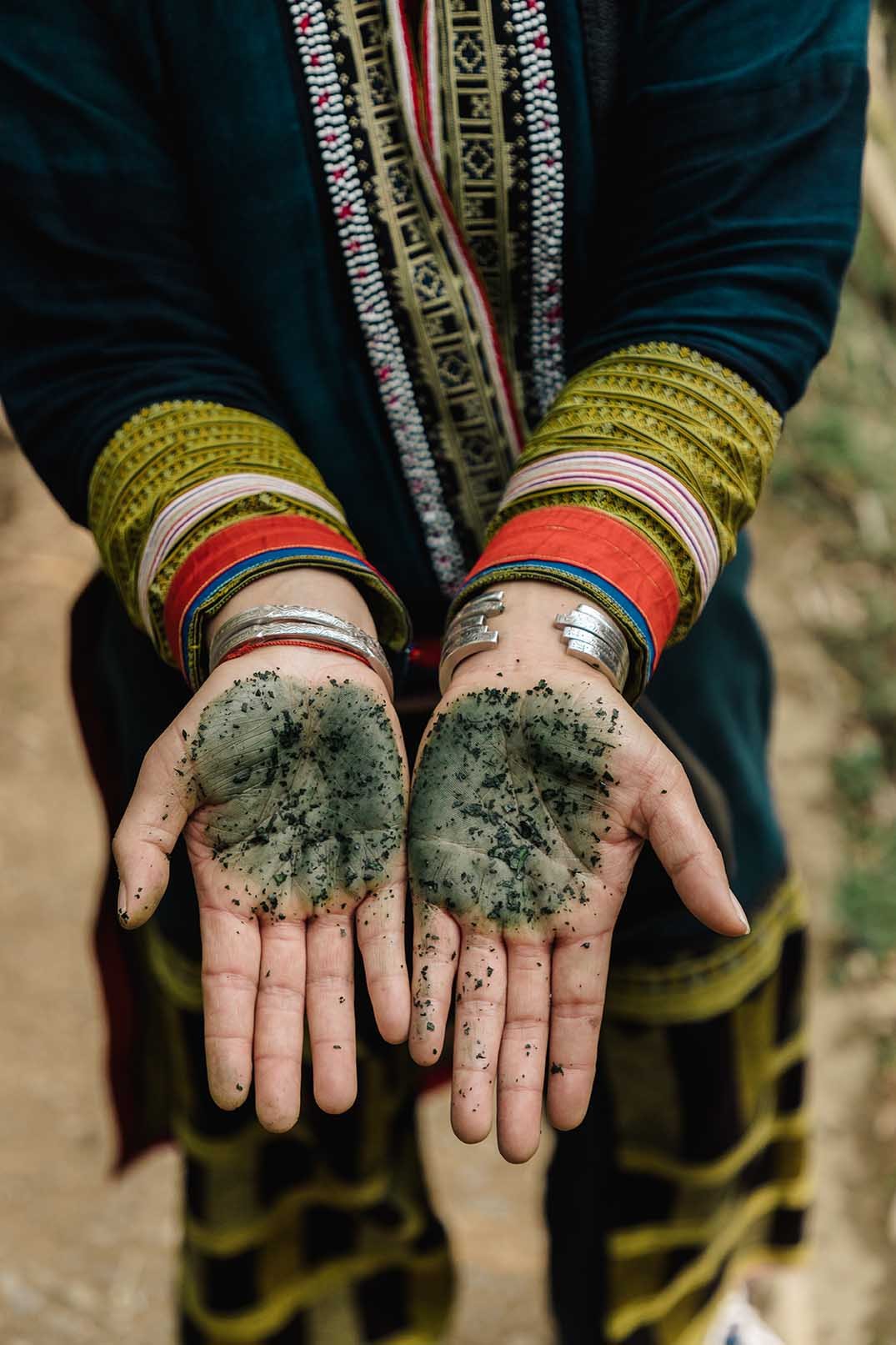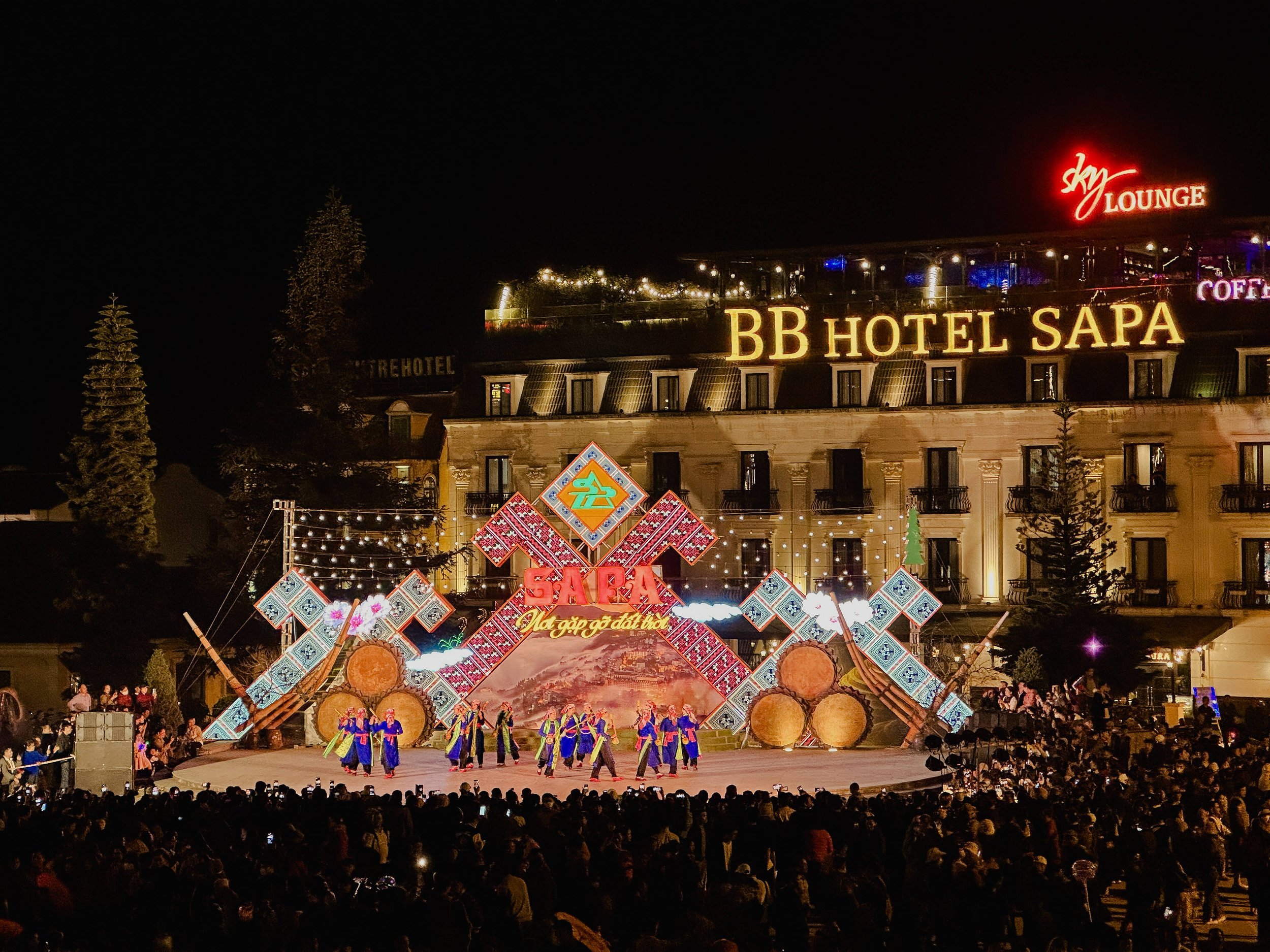What to Do in Sapa: Top 10 Attractions
Sapa is a town in northern Vietnam, located in a mountainous region surrounded by rice terraces and villages, home to the country’s ethnic minorities. It’s a quiet town during the day, but transforms at night when the neon lights come on.
Among the main attractions in Sapa, Vietnam, are hiking between villages to see the rice terraces, medicinal baths in the villages, climbing the highest mountain in Indochina, visiting a waterfall that once powered a hydroelectric plant, relaxing in scenic cafes, and enjoying the city’s lively nightlife.
Read: Vietnam: 10 Essential Tips for Your First Trip to Vietnam | Vietnam Travel Guide: 15 Days from North to South
1. Lao Chai and Ta Van Villages
Lao Chai and Ta Van are two villages in Sapa, home to some of the city’s most beautiful rice terraces. These villages are home to the Hmong and Zay ethnic minorities. If you must choose one hike, this is the one to do.
It’s an easy 6km walk, mostly downhill on a paved road, taking about 3 hours. Along the way, you’ll see the rice terraces from above and walk among them. You’ll also interact with the locals, learn about local crafts, and the rice cultivation process. Read: Trekking in Sapa: Lao Chai and Ta Van, Vietnam
2. Cat Cat Village
Cat Cat is a themed village in Sapa, where a former hydroelectric plant was built by the French, using the village’s waterfall. The waterfall remains one of the village’s main attractions.
Access is via stairs, with numerous shops and scenic spots for photos with the rice terraces in the background. At the waterfall, there are daily performances at 2 p.m. and photo ops with traditional-style sets. You’ll also find plenty of stores offering themed costumes for rent. Read: What to Do in Cat Cat, Sapa
3. Suoi Ho, Ma Tra, and Ta Phin Villages
Suoi Ho, Ma Tra, and Ta Phin are three villages in Sapa, home to the Hmong, Black Hmong, and Red Dao ethnic minorities. Beyond rice terraces, you’ll see peach orchards, strawberry fields, artichokes, orchids, and more.
It’s an 8km walk over 3 hours, with a changing landscape as you navigate ups and downs along a relatively easy road. In Ta Phin, the last village on this trek, you’ll learn about the Red Dao’s knowledge of herbal medicine, especially their famous medicinal baths.
Ta Phin is also home to the ruins of a monastery for Christian nuns, built by the French in 1942 and abandoned in 1945. Overgrown with vegetation, the building is an intriguing site to visit. Read: What to Do in Ta Phin, Sapa
4. Medicinal Bath in Ta Phin
The village of Ta Phin is home to the Red Dao ethnic minority, known for their deep knowledge of herbs and plants with therapeutic properties. Here, visitors can enjoy an herbal bath, reputed to bring relaxation, physical well-being, and improved circulation.
The herbal bath, a “miracle water,” is so popular that it’s also offered in Hanoi at spas and massage parlors. The bath is a mixture of herbs and leaves cooked for hours in large tanks until it’s ready. There are rooms with tubs for visitors to bathe in. The cost is 150,000 dongs. Read: What to Do in Ta Phin, Sapa
Watch our Vietnam videos on YouTube and check out all our Vietnam articles.
5. Stone Church
Sapa’s Stone Church, also known as the Church of Our Lady of the Rosary, is located in the heart of the city and was built by the French in the early 20th century in Roman Gothic style.
The church was built with its facade facing the rising sun, and behind it is Ham Rong Mountain (Dragon’s Head), from which you get a privileged view of the city. Read: Sapa’s Stone Church
6. Ham Rong Mountain
Ham Rong Mountain gets its name from its dragon-head shape. Access is via stairs, and while it’s easy, the hike can be long and tiring.
At the summit is San May (Cloud Garden), a flower-filled garden offering a beautiful view of Sapa and Fansipan, the tallest mountain in Vietnam, also known as the “Roof of Indochina.”
Read: Is a Vietnamese Guide Worth It? | What to Do in Hanoi: Top 15 Attractions
7. Fansipan Mountain
Fansipan is the highest mountain in Vietnam, standing 3,143 meters above sea level. It’s also called the “Roof of Indochina” because it’s the tallest mountain in the region (Laos, Vietnam, Cambodia) from the time of French colonial rule.
You can reach the summit either by trekking or by taking the cable car at Sun World Fansipan Legend (near the Stone Church), which takes 15 minutes. Once there, you can take a monorail between mountains and choose to hike up the stairs or take another monorail to the summit. The 360º view is best on a clear day.
Tickets can be purchased from Monday to Friday, 7:30 a.m. to 4:00 p.m., and on weekends until 6:30 p.m. The cable car opens 30 minutes after the ticket office and operates for two hours after closing.
Photo: Fansipan Legend
8. Love Market
Love Market is a famous market in Sapa. In the past, young people from the city and surrounding villages would gather on Saturday nights to dance, often hoping to find love. There’s a “game” where the boy chooses the girl, and she must accept his gift. It’s a long story—better to see it in person!
The market takes place around the Stone Church, and on Saturday nights, the town comes alive. The square becomes a large stage for music, dance, and family fun. We never expected the city to be so lively at night.
If you’re not a fan of crowds, it’s best to avoid weekends in the city when local and Chinese tourists are around, as the Chinese border is only an hour away from Sapa.
9. Sapa Market
Sapa Market, or Cho Sapa, is located near the bus station in a modern building. If you’re hungry, this is the place to eat! It’s where the locals go.
It’s an interesting place to visit in Sapa, as you’ll see typical regional products, divided into three parts: the first floor has herbs, spices, and cutlery; the second floor features handmade products from the villages; the outdoor area has vegetables, fish, meat, and ready-to-eat dishes at very low prices.
Almost directly across from the market is Sapa Lake, a great spot to sit and admire the mountains. At certain times, you’ll also see the busy traffic of golf carts transporting tourists from hotels to the town center. Read: Sapa Market, Vietnam
10. Stay at a Mountain Hotel
Sapa is a mountain town, offering scenic views from almost every location. Choose a hotel with a mountain view. We stayed at BB Sapa, which offered views of both the town and the mountains. The breakfast room was glass-walled, providing a stunning view.
Bonus Tip:
Choose a restaurant with a view for lunch. We dined at Lotus Restaurant and the Tubotel restaurant, both offering spectacular views.
Or head to Moana Sapa, a cafe 1.5km from the town center, high in the mountains. This place is entirely designed for photography, featuring a giant hand, a Hindu portal, and scenic statues. Taking photos in scenic spots is something that Asians love! Admission costs 80,000 dongs.
Sapa has much more to offer, but you can visit these attractions in 2 or 3 days. You’ll even have time for some shopping!
Our entire 2023 Vietnam package was arranged with Mundo Asia, a Vietnamese agency that speaks Portuguese and caters to Brazilian and Portuguese travelers in Asia, offering both small group and private tours. Check out Mundo Asia on Instagram @mundoasia.tours or contact them via WhatsApp.
GOING ON A TRIP? THEN BOOK HERE!
Did you know that when you make a booking using the blog’s link, we receive a small commission? You don’t pay anything extra, you get discounts, and you help the Eduardo and Mônica blog produce complete and quality articles.
Help the blog that helps you!
• Accommodation: Booking.com
• Tours and Tickets: Get Your Guide
• Transport: 12go (Asia, Brazil, Europe, and Australia)
"This post is a translated version of the original content from our website www.eduardo-monica.com"
Veja também nosso site em Português: www.eduardo-monica.com























